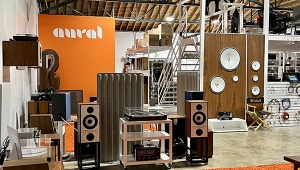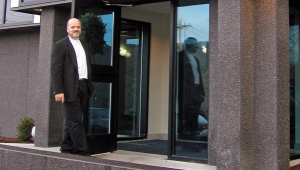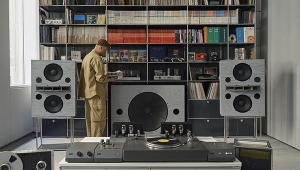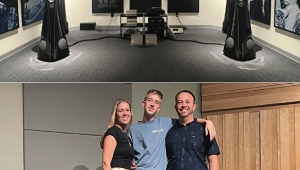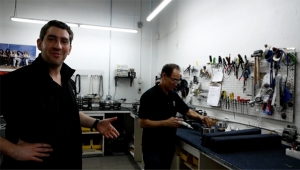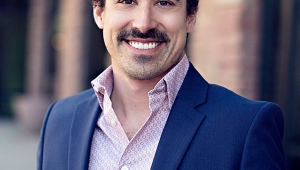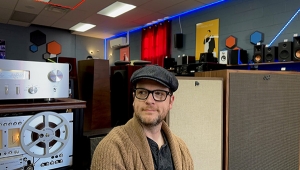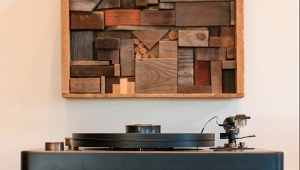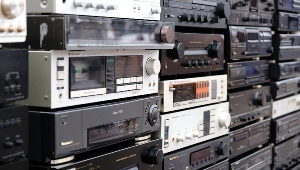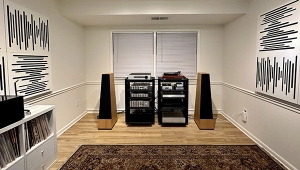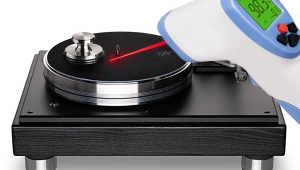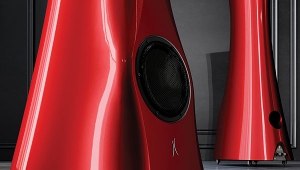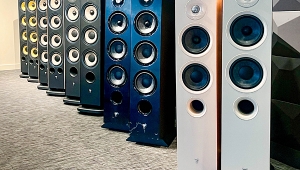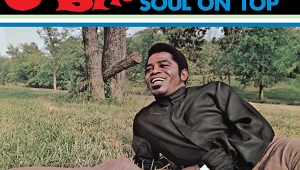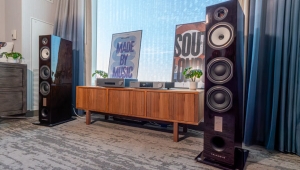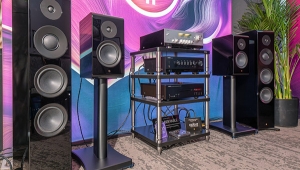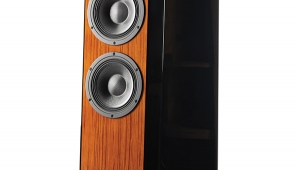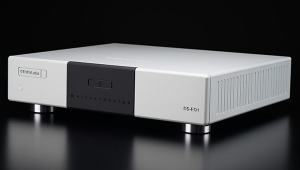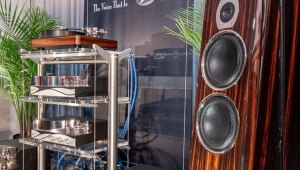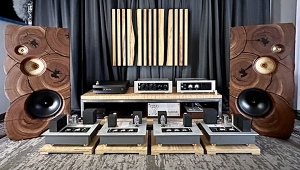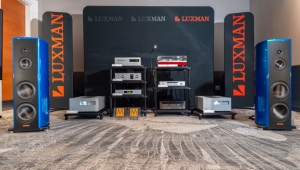| Columns Retired Columns & Blogs |
Re-Tales #35: Hi-Fi by the Book

Phaenelagh "Nel" Lenard Burnett is an outlier in a most basic sense: She's a woman who works in hi-fi. For the past several decades—essentially all her adult life—she has immersed herself in running her father's audio business.
Footnote 1: See https://education.lenardaudio.com/.
Her father is John Lenard Burnett of Lenard Audio, a veteran designer, researcher, and educator whose work has crossed over from recording studios, concert halls, and commercial spaces to hi-fi for the home. The Opal 4-way active loudspeaker system is the senior Burnett's signature product and serves as the foundation of Lenard Audio's hardware and strategic designs.
"When I was a baby, Lenard was the largest manufacturer and supplier of concert PA systems and guitar amps and so on in the Australian market," Nel told me. "Some of my very first memories are of me sitting on his workbench. That was one of my happiest places to be when I was a kid, literally sitting on his work."
Nel committed to succeeding her father when she was still in her early 20s. She took the helm in 2014. The senior Burnett (below) is still deeply involved with the company as its lead designer.

The company's goal is nothing if not ambitious: to "save the world from bad sound." In our conversations, Nel spoke of "cleaning the airwaves" and "removing audio pollution"—of moving away from "bad sound" in a wide variety of settings, not just hi-fi rooms and music studios but also bars and restaurants.
What is "bad sound?" For Nel and Lenard Audio, it means what it often means: excess dynamic compression. Excess distortion. Too much reverberation, in a space or on a recording. Lenard wants to make full fidelity, "transparent" audio systems widely available, even ubiquitous, at home, in recording studios, in cinemas, at live concerts—even in non-audio settings.
"Transparent" can mean different things to different people—transparent to what? To Nel it means avoiding additive coloration and distortion that prevents the listener from hearing what the music's creators intended.
To achieve these goals, Lenard Audio aims not only to create better hardware but also to educate. The Lenard Audio Institute (footnote 1) offers copyrighted educational information, written and compiled by John Lenard Burnett and available online to anyone. Nel, her father, and the company want to take knowledge about high-quality audio mainstream, even, at a basic level, to the general population. It all starts with hardware. Good hardware is needed to get the sound out of the studio and to listeners' ears intact. "The hardware must be right first," Nel told me.
Lenard Audio's hardware vision starts with the 4-way, fully active design of their Opal loudspeaker system with active crossovers. Each of the four frequency ranges—bass, lower voice, upper voice, harmonics—is handled by its own driver, within its own chamber, with its own amplification. Amplification can be class-D or class-AB, transistor-based or tubed.
But hardware alone isn't enough. Education isn't enough. Nel and John believe that standards are needed—widely accepted standards that define what an audio system must achieve (footnote 2).
That four-way active system is the starting point. "You can adapt things like whether you manage it as a 3-way system or a 2-way system, but your starting point must be fully 4-way active—that becomes your reference as to how to get a system to behave as close to how we would hear sound in the natural world."
That question encapsulated Lenard Audio's goals: How do we get the system to provide sound as close as possible to how we hear it in the natural world—or to what the engineers sought in the recording studio? Lenard Audio's proposals aim to standardize various attributes of sound: intelligibility; spectral energy balance; harmonic detail; bass discernment; directivity control. Those attributes should apply to hardware across all audio applications, adjusting only for scale and dynamic range.
Lenard's rationales go beyond what's musically pleasing. Another goal is to avoid hearing damage, not only at concerts and nightclubs but also restaurants and bars, with loud laughter, conversation, and music bouncing off hard surfaces. Hearing damage can result from loud sounds but especially from bad loud sounds—uncontrolled distortion at certain frequencies. "If more people were aware of what happens when they're in loud restaurants, bars, etc.—not just concert venues—then they'll start to demand better quality."
Hi-fi, though, is central. "Providing broad market access to transparent sound systems will ... reconnect the listener with the music and the music creators," she said. "This connection will give control back to the creators, ensuring the future of music evolution continues." The establishment of standards might then influence how people record music: Perhaps they'll focus more on desirable attributes if it's certain that they'll be transmitted through to the music consumers' ears.
Beyond what's necessary for hardware compatibility, standards often encounter resistance and ruffle feathers. That's because standards can lead to a loss of variety. Returning control to the content creators means taking it away from consumers, most notably from those with very particular ideas about how they want their systems to sound. Not everyone's tastes align with the standards, no matter how much sense they seem to make.
Note, though, that Lenard's main focus is on the "broad market" and not, eg, lovers of single-ended triodes. Lenard Audio isn't seeking a monopoly on standard-setting. The goal is to get established as "thought leaders" and get like-minded manufacturers on board. Nel wants to build consensus, to encourage companies to deploy common principles and attributes aimed at creating and distributing transparent sound. Companies that don't agree with those principles won't sign on, and that's okay.
One goal of such thinking is to make hi-fi more affordable. While Lenard Audio is not against high-end hi-fi—the Opal system starts around $40,000 US—the standards-based hi-fi they're proposing wouldn't require luxury pricing. If hi-fi were standards-based, high-quality sound would not be a privilege of a wealthy few.
"Everyone deserves access to full-fidelity sound," Nel told me. To deny people proper hi-fi, she believes, "would be like denying them water."
Footnote 1: See https://education.lenardaudio.com/.
Footnote 2: See http://standards.lenardaudio.com/en/.
- Log in or register to post comments
